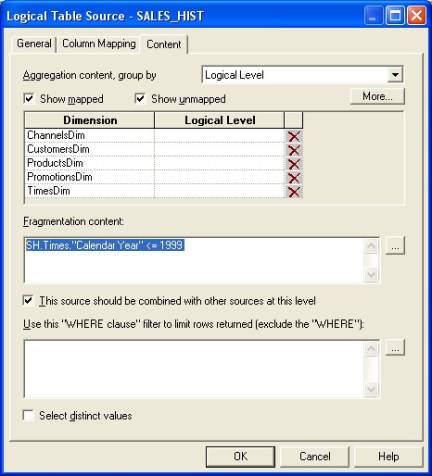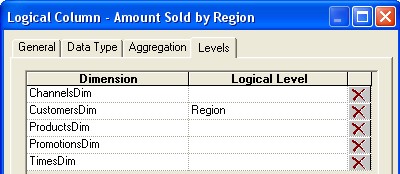About
Grain definition in the context of OBIEE.
The following list describes the different grains in navigating a query:
- Query grain. The grain of the request.
- Aggregation grain. The grain of the aggregate source of from a level based metrics
- Time Series grain. The grain at which the time series function aggregation is requested.
- Storage grain. The query in the example can be computed from daily sales or from monthly sales, or from quarterly sales.
Articles Related
Type of Grain
Query
The grain of the request (logical sql) is the level of summarization. The grain is determined through the baseline columns. In the query below, the query grain is Quarter.
Select quarter, myMetrics from MySubjectArea
In 11g, the hierarchical column determines the grain of the report.
Let op, the following under the hood query expression change also the query grain:
- the filters that are applied for data security
Aggregation
 The aggregation grain is defined in the content tab of the logical table source.
The aggregation grain is defined in the content tab of the logical table source.
When the query grain match the aggregation grain of a logical table source, this one is used to create the physical query.
You can also define a aggregation grain calculation on a measure. This kind of calculation creates level-based measure.

